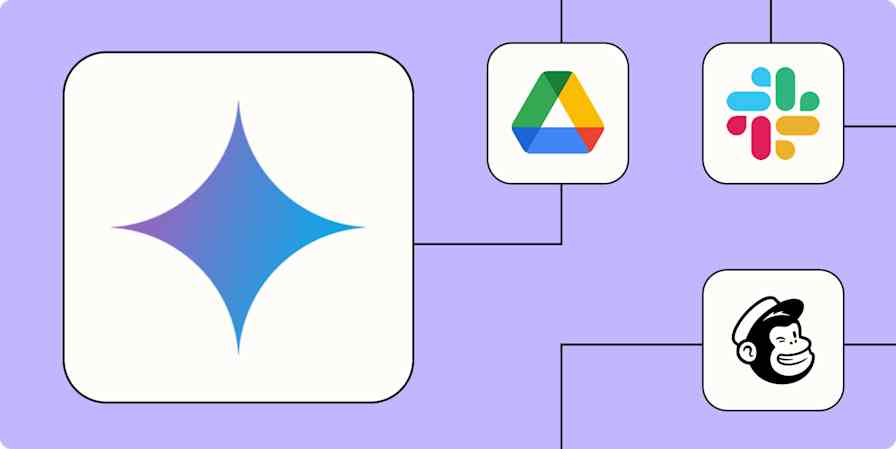It's hard to put a finger on the distinction between Windsurf vs. Cursor—they're really similar. They're both IDEs (integrated development environments) that have evolved to suit vibe coders—non-coders building apps for work and fun. They're similar in terms of both the audiences they serve and how they work.
I've been using Cursor for a while, and I spent time playing around with Windsurf to see how it stacks up. Here's what I learned.
Table of contents:
Windsurf vs. Cursor at a glance
Here's the gist of how Cursor and Windsurf stack up:
Windsurf is best for enterprise users, especially those in regulated industries, who require high security standards around the AI tools they use with data. Before the rebrand (it used to be called Codeium), users often drew comparisons to GitHub Copilot.
Cursor is best for individuals and smaller teams. It bills itself as "developer-first," and in my opinion, it's more intuitive to adopt as a non-developer, too.
| Windsurf | Cursor |
|---|---|---|
Best for | Enterprise users, especially in regulated industries requiring high-security standards | Individuals, small teams, vibe coders, and developers |
Development environment | VS Code-based desktop IDE; Chrome plugin available for Colab, VS Code, and other popular environments; Turbo mode lets you auto-execute terminal commands for ease | VS Code-based desktop IDE with a clean UI and intuitive project flow |
Learning curve | ⭐⭐⭐ Moderate to steep; more technical quirks, some interface issues | ⭐⭐⭐⭐ Smoother experience; better for non-developers |
AI models and capabilities | ⭐⭐⭐ Memory and Supercomplete features enable smarter autocomplete and context handling | ⭐⭐⭐⭐ Lacks persistent memory but handles ambiguous prompts well; offers a standard autocomplete feature |
Pricing | ⭐⭐⭐⭐ Starts at $15/month for 500 prompt credits; free plan includes 5 daily prompt credits and a 2-week Pro trial | ⭐⭐⭐⭐ Starts at $20/month (or $16/month, billed annually) for 500 premium requests; free plan includes 2,000 completions and 50 slow requests |
Cursor has a slightly better user experience
Generally speaking, my experience with Cursor has been a cleaner path from A to Z when building something. I should caveat this all by saying that I'm a relatively new user of Windsurf compared to Cursor. But I think that was only part of it.
In general, Cursor does a great job of catering to wherever you're at on the spectrum of beginning vibe coder to expert full-stack developer. It offers the flexibility to enter terminal commands yourself or run them from chat, and you can use the guardrails it provides or disregard them completely.
Windsurf, on the other hand, is a little fussier. For example, after starting a few different projects, I ran into a couple frustrations:
While Cursor warns users against sharing secret keys from APIs in chat, Windsurf was exposing secret keys from my .env file.
There were a few times when I clicked to insert suggested code for a specific section and inadvertently overwrote changes in the wrong file. There was no obvious way (like a keyboard command or undo button) to return the code it overwrote.
Windsurf does have an interesting feature you can toggle on and off: Turbo mode, which lets you delegate the auto-execution of terminal commands in Windsurf. That adds some guardrails that make it similar to AI coding tools designed for non-developers like Lovable and Bolt.

I found this especially useful when starting new projects. There are many routine terminal commands you need to run consecutively to install libraries and dependencies, for example, and Turbo mode makes that all a lot easier.
Really, the development and user experience of Windsurf and Cusor are about as similar as two different tools can be. Familiarity with one will transfer well to familiarity with the other.

But I've had the best user experience building with Cursor—and it'll make more sense as to why when we dig into the AI capabilities next.
As with all new tools and technologies, experience is catching up with possibility when it comes to using Windsurf and Cursor. So in the meantime, these resources can help you get started and stay on top of updates:
Find support in unofficial communities like Reddit in the Windsurf and Cursor subreddits.
LinkedIn Learning instructor Morten Rand-Hendriksen teaches classes about building with AI, including using IDEs such as Cursor and tools like GitHub Copilot, how to build AI agents, and how to use MCP technology.
Nat Eliason's Build Your Own Apps course is a solid introduction to vibe coding and building with an IDE like Cursor.
Windsurf and Cursor each have their own AI quirks
I find the AI building process in Cursor to be more intuitive: it seems to operate more effectively with more ambiguous AI prompts, which is a real power move.
Coming from Cursor, Windsurf's AI chat (called "Cascade") has some quirks—even with detailed prompts, I had some trouble. But it does have a lot of potential. Cascade has an interesting memories feature: the agent saves details about the user across chats within a project to provide better context for answers.

This is a notably missing feature in Cursor that eventually leads to less useful results unless you spend more time and credits to add context.
Similarly, Windsurf Supercomplete (part of their larger Tab feature) has a compelling premise: it can understand context across multiple workspace files—it's like a superpowered auto-complete for writing code. While Cursor does have anautocomplete feature, it's not as robust as Windsurf's.
And even though it took a bit longer to get there, Windsurf did produce great results. Here's an interface for a Chrome extension it built for me, compared to the same thing I was building in Cursor.

Windsurf has slightly better and more flexible integration capabilities
Both Cursor and Windsurf handle working in GitHub repositories in much the same way: interacting with GitHub via terminal. They also both offer methods for integrating third-party services like APIs. If you want to connect a particular API or technology (like user authentication) to your app, AI chat in both tools can guide you through the necessary steps.
You can also connect Cursor or Windsurf to Zapier MCP (model context protocol), so your AI tool can talk to thousands of other apps.

Windsurf has the edge here because it also offers a Chrome plugin that allows you to pull its IDE into other popular editors, like as Google Colab and Visual Studio Code—that makes it an even more flexible tool.

Windsurf and Cursor have well-matched value for the price
Pricing models for AI coding tools can be confusing—and they change sometimes on the daily. But as I write this, the value of Windsurf and Cursor seem pretty evenly matched.
Windsurf offers a limited free plan that includes a two-week Pro trial and five prompt credits/month. Windsurf's pricing for Pro currently starts at $15/month, which includes 500 prompt credits. (Per a recent pricing change, tool calls—like reading a file—no longer consume additional credits.)
Cursor also offers a limited free plan that includes a Pro two-week trial. It includes 2,000 completions and 50 slow premium requests. Cursor's pricing for Pro currently starts at $20/month ($16/month when paid annually). It's comparable to Windsurf's Pro pricing model in that you also get 500 requests.
James Kemp, Core Product Manager for WooCommerce, makes a good point about pricing for AI tools, using Cursor as an example: "I think Cursor's pricing is fair for the value it provides, especially when used as the core IDE. It effectively turns AI from a helpful assistant into a true project partner, which is hard to put a price on. That said, I do think the real value depends on how deep you go with it—if you only use it occasionally, the cost might feel steep. But as a daily driver, it's well worth it for me."
One last thing: the cost of the underlying AI models is likely more expensive than what Windsurf and Cursor make in monthly subscription costs, so I wouldn't be surprised if costs went up in the near future—maybe even by the time you read this.
Cursor vs. Windsurf: Which should you choose?
After considering all of the current features and future possibilities, I'm sticking with Cursor as my primary IDE for vibe coding. I find it to have an overall better "quality of life" when using it, especially as a non-developer. But I plan to keep playing with Windsurf beyond this initial test because of what I can see in the features they're actively developing.
Ok, but which app should you choose: Windsurf or Cursor?
I recommend testing out both to see which one better fits your vibe. Cursor has a more active user base and resources to find support in, but Windsurf has some innovative features that are definitely worth getting to know.
From there, continue to build out your AI workflow tool stack with Zapier Agents—an easy way to vibe code your way to your ideal workflow solution.
Related reading:










